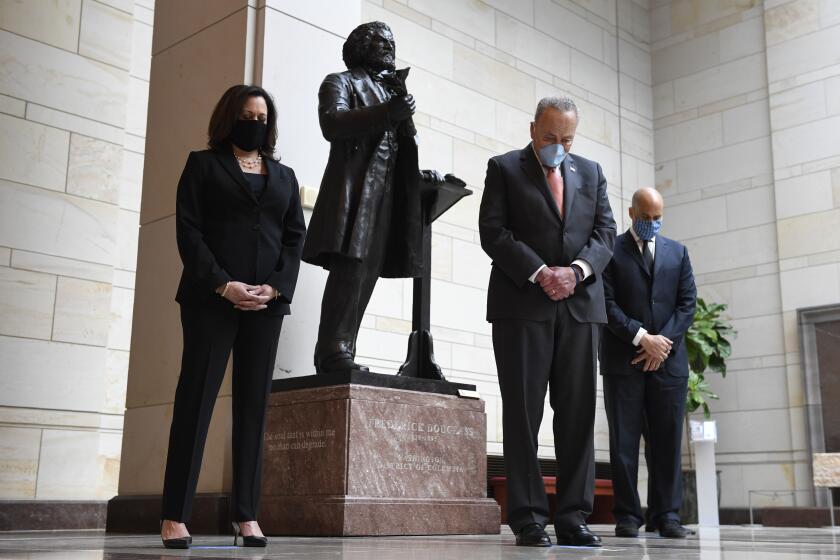Bullets can tell tales
CRIME SCENE investigators can often match spent bullet casings to the handguns that fired them -- but only if they have the guns. They often don’t, and have few clues where to look for them. That leads to dismal statistics like these: No arrests were made in 45% of the more than 1,400 homicides committed with handguns in California in 2004.
Now the Assembly is poised to consider a bill that would help police trace fired bullets to the last registered owners of the weapons, and perhaps to the people who pulled the triggers. AB 1471 would require makers of semiautomatic handguns sold in California, beginning in 2010, to use “microstamping” technology to mark cartridges with unique identifiers as they are fired. The Legislature should pass this sensible crime-solving bill and send it to Gov. Arnold Schwarzenegger for his signature.
Gun-rights advocates, who often oppose any technology or system to identify gun buyers, present a bevy of trumped-up reasons to block this measure. Some argue that firing pins can be filed down. The bill addresses that by requiring microscopic markers on other components of the weapon that continue to transfer identifiers to the cartridges even if the firing pin is tampered with. Others claim that gun-toting criminals will gather used cartridges from firing ranges and scatter them at crime scenes to cover their trail. Ridiculous. They could do that now, but they don’t. Even if they did with marked bullets, police would have to work harder to identify the gun owner but would still be ahead of where they are now.
These objections mask what really alarms opponents: Buyers of microstamped guns will be less willing to resell, off the books, to those who can’t or won’t register. That concern is yet one more reason to pass this bill and put it to work solving crimes.
More to Read
Get the L.A. Times Politics newsletter
Deeply reported insights into legislation, politics and policy from Sacramento, Washington and beyond. In your inbox three times per week.
You may occasionally receive promotional content from the Los Angeles Times.










